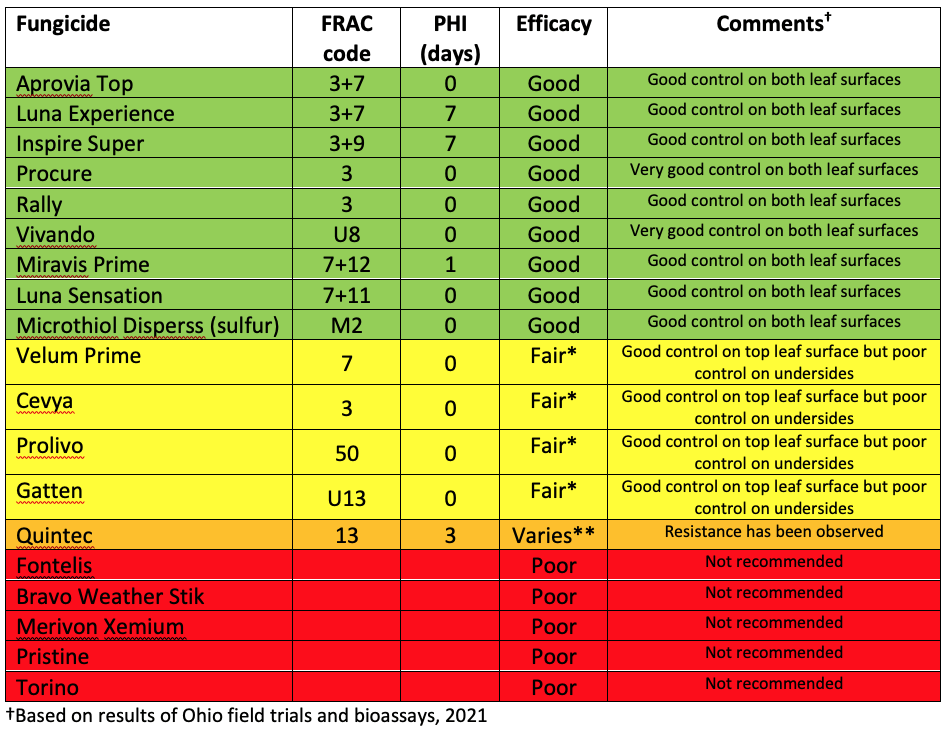
Partial map of 2023 cucurbit downy mildew reports as of August 7, 2023. Counties in red indicate new reports (<7 days), while counties in green have older reports. cdm.ipmpipe.org.
Bill Holdsworth of Rupp Seeds confirmed a severe outbreak of downy mildew on pumpkins in his field trials in Fulton County, Ohio today. Downy mildew was extensive in this field, indicating that it had begun some time ago, perhaps a week or two. Last year, Bill reported pumpkin downy mildew in the same county on August 10. It was likely caused by Clade 1 of the downy mildew pathogen Pseudoperonospora cubensis, which has a broad host range among cucurbits, preferring pumpkins, squash and watermelons, but also infecting cucumbers and melons. Clade 2 isolates infect and cause damage to cucumbers and melons, and are seen in northern Ohio first. As in 2022, the Fulton County outbreak on pumpkins was unusual for the Great Lakes region. There are no reports of downy mildew on cucurbits other than cucumber in the Midwest, Northeast or Canada at this time – although not being reported doesn’t mean it is not there. We have not seen downy mildew on pumpkins, squash, melons or watermelons in sentinel plots in Sandusky and Franklin Counties, and Jim Jasinski, OSU Extension, has not found downy mildew in scouted pumpkin fields on OSU’s Western Agricultural Research Station in South Charleston.
Downy mildew can kill cucurbit foliage, including that of pumpkins, which will stop the fruit from maturing unless it is controlled preventatively. Pumpkin, squash, and watermelon growers should be applying at least a protectant fungicide such as chlorothalanil (Bravo, Eqqus, etc.) and amp up scouting efforts. Growers in Fulton and surrounding counties should apply downy mildew-targeted fungicides (Orondis Opti, Ranman, Omega, Previcur Flex, and Elumin) posted here and here in a spray program alternating fungicides with different modes of action/FRAC group. Follow all label instructions.
If you suspect cucurbit downy mildew you can text or email pictures to Sally Miller (330-466-5249; miller.769@osu.edu) of both sides of lesions, with the underside in the highest possible magnification. It is harder to confirm downy mildew in pumpkins and squash from photos because lesions are less distinctive and sporulation is less than in cucumbers. So you may need to send a sample to the OSU C. Wayne Ellett Plant and Pest Diagnostic Clinic (CWEPPDC) in Wooster for confirmation. Instructions for sample submission are here. Digital images may also be sent to the CWEPPDÇ.
Thanks to financial support from the Ohio Produce Growers and Marketers Association’s Ohio Vegetable and Small Fruit Research and Development Program, there is no fee for this service for Ohio vegetable growers.



















